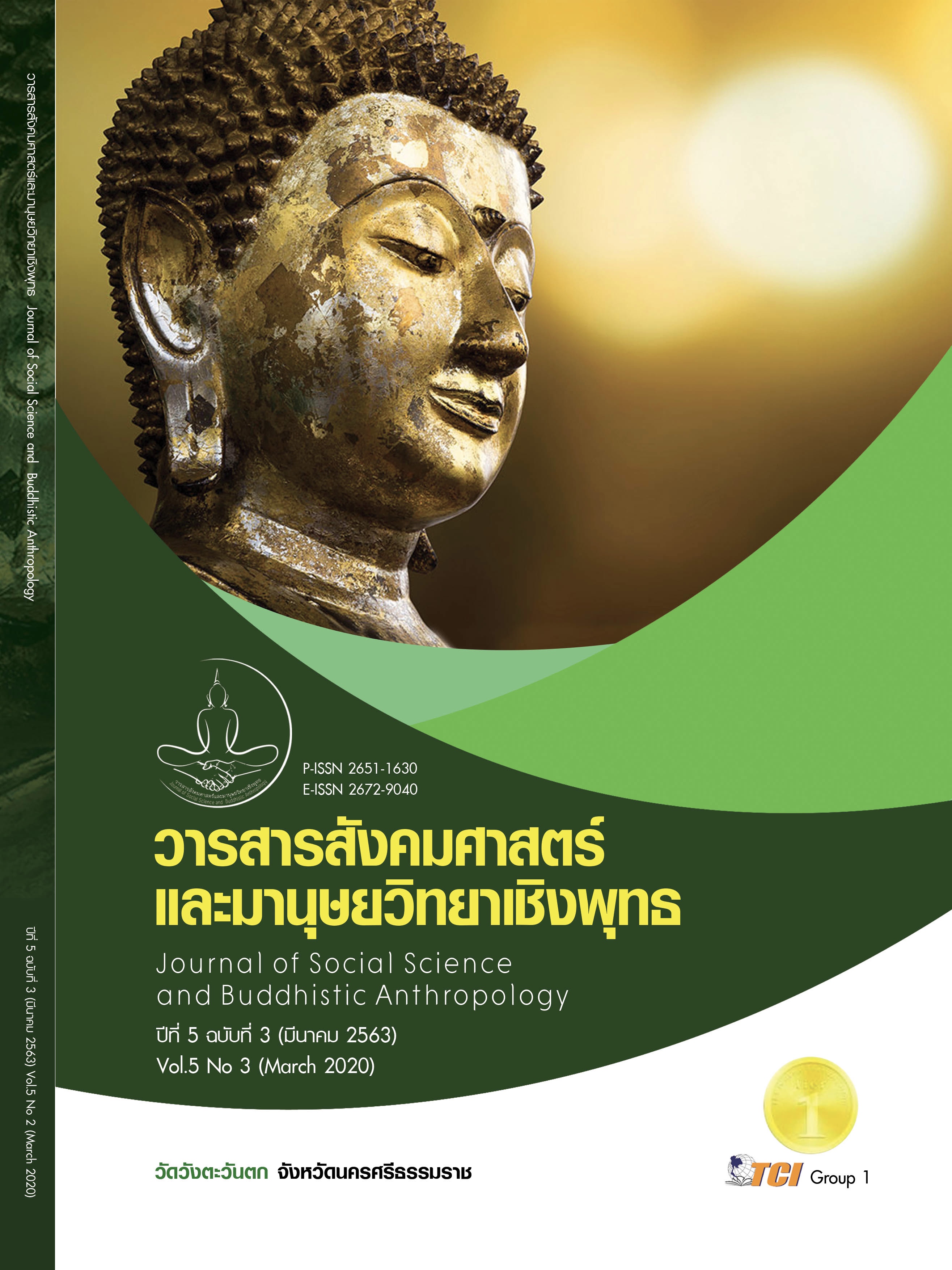CONFLICT MANAGEMENT MODEL TOWARD DISPUTE BETWEEN THAILAND AND CAMBODIA: A CASE OF PREAH VIHEAR TEMPLE
Keywords:
Conflict Management, Thailand-Cambodia, Temple Of Preah Vihear DisputeAbstract
This research has objectives to 1) study the cause of problem over dispute between Thailand and Cambodia regarding Temple of Preah Vihear, 2) study the role of Thai government prior to and after the ruling of international court of justice, and 3) propose a resolution management model on conflict between Thailand and Cambodia. This is a qualitative research in which documentary study in-depth interview and a focus group. The key informants were chosen by sampling in the form of Snowball, which provided information and suggestions for relevant information providers that could provide more clarity, consisting of 4 executives, 4 Government officer, 2 academics, and politicians. Local and 7 people, totaling 17 people. Used for content analysis Group data and examine data in a triangular form, presenting descriptive research results. The study found that 1) the cause of Preah Vihear Temple conflict between Thailand and Cambodia is rooted on the claim over Preah Vihear vicinity as Thailand and Cambodia are holding different sets of delimitation map. 2) The role of Thai government on the conflict, prior to and after the court’s ruling. When Field Marshall Plaek Pibulsongkram was a premier, the Fine Arts Department has registered Temple of Preah Vihear as national archaeological site. When Cambodia unilaterally registered Temple of Preah Vihear as a world heritage, Thai government has protested. This leads to a withdrawal from associate member of world heritage. Cambodia brought the case to the world court on 4.6 square kilometer settlement. The world court resolved on July 18, 2011 of full retreat and advised that Thailand and Cambodia co-develop Temple of Preah Vihear. 3) The resolution management model on conflict between Thailand and Cambodia, the dispute can be managed based on the court-ruling and a PEACE Model on Propinquity, Egalitarianism, Avast of fire, Colloquium, and Exactitude in delimitation
References
จิรรัชวัลคุ์ ทรงสุวรรณวิภา. (2555). ประชาคมการเมืองและความมั่นคงอาเซียนกับการแก้ปัญหาข้อพิพาท ระหว่างไทย – กัมพูชา กรณีเขตแดนและประสาทพระวิหาร. วารสารรามคำแหง ฉบับมนุษยศาสตร์, 33(1), 89 – 108.
ชาติชาย มุกสง. (2559). กรณีพิพาทปราสาทพระวิหาร. กรุงเทพมหานคร: สถาบันพระปกเกล้า.
ทรงพร ทาเจริญศักดิ์. (2559). การสื่อสารทางการเมืองของสํานักข่าวต่างประเทศกรณีพระวิหาร: ศึกษาในห่วงเวลาตั้งแต่ ค.ศ. 2008 ถึง 2013. ใน ดุษฎีนิพนธ์ปรัชญาดุษฎีบัณฑิต สาขาสื่อสารการเมือง. วิทยาลัยสื่อสารทางการเมือง มหาวิทยาลัยเกริก.
ทักษพร น้อยแก้ว. (2556). Preah Vihear: The Clash of National Identity between Thailand and Cambodia (เขาพระวิหาร: การปะทะด้านอัตลักษณ์ ของชาติระหว่างไทยกับกัมพูชา). กรุงเทพมหานคร: สำนักงานสภาความมั่นคงแห่งชาติ.
สมเกียรติ วันทะนะ. (2544). อุดมการณ์ทางการเมืองร่วมสมัย. ใน วิทยานิพนธ์รัฐศาสตรมหาบัณฑิต สาขารัฐศาสตร์. มหาวิทยาลัยเกษตรศาสตร์.
สัณฐาน ชยนนท์ และคณะ. (2560). บทบาทของไทยต่อปัญหาพิพาทไทย-กัมพูชา กรณีเขาพระวิหาร. วารสารรัชภาคต์, 12(26), 317 – 327.
สุภางค์ จันทวานิช. (2543). วิธีการวิจัยเชิงคุณภาพ. กรุงเทพมหานคร: สำนักพิมพ์แห่งจุฬาลงกรณ์มหาวิทยาลัย.
Alfred Gerstl & Mária Strašáková. (2017). Unresolved Border, Land and Maritime Disputes in Southeast Asia. Boston: Brill.
Johnson, D. W., & Johnson, R. T. (1987). Conflict Resolution and Peer Mediation Programs in Elementary and Secondary Schools: A Review of the Research. Review of Educational Research, 66(4), 459-506.








